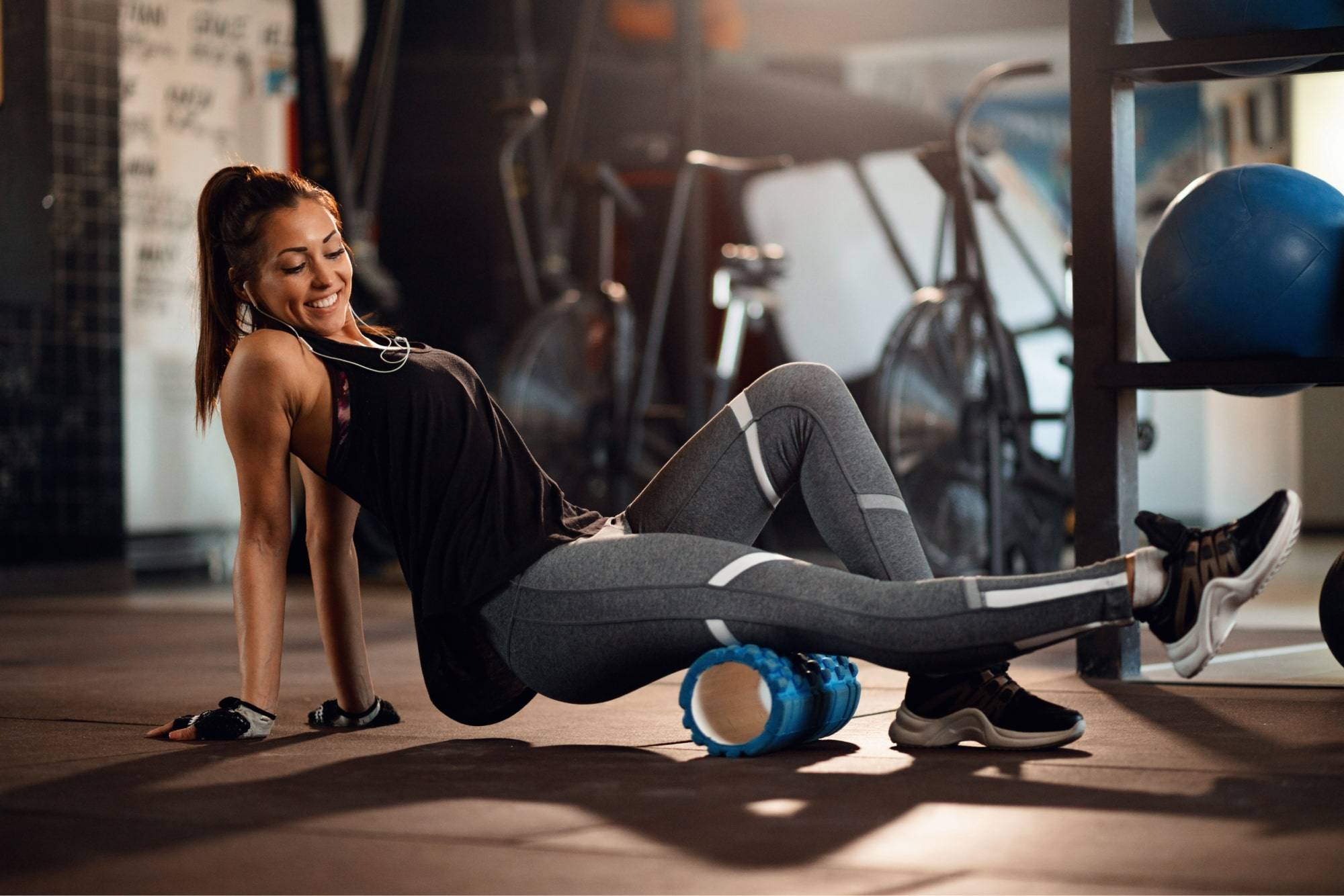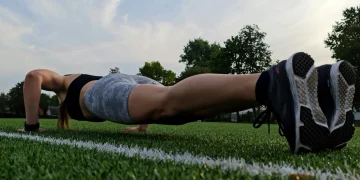Foam rollers are becoming more and more popular as an alternative to stretching. But is foam rolling for runners necessary? And if so, how does one foam roll correctly?
Learn more in this article as we discuss the importance of foam rolling and how to use foam rollers for maximum benefit.
What Are Foam Rollers Used For?
Foam rollers are foam cylinders used for self-myofascial release—a form of therapy to treat myofascial pain syndrome. This syndrome refers to your muscles (myo) and fascia (connective tissue).
Knots (trigger points) and tightness (adhesions) can cause pain and soreness in the muscles, which can allegedly be cured by foam rolling. But is it true? Let’s have a look at the research.
Benefits of Foam Rolling
As this practice is relatively new, it is still hard to quantify the benefits of a foam roller. While most research touches on the effects of massage and self-massage, some studies specifically focus on myofascial release and foam rolling benefits.
Increased Range of Motion (ROM)
One study from 2013 found that using a foam roller can increase your range of motion. The study only used short rolling sessions, up to 10 seconds. Nevertheless, even such short sessions improved ROM by up to 4.3%, which is not insignificant.
A German meta-study of 2019 further confirmed this with another paper in the same year, showing up to a 5% increase.
Reduced Muscle Soreness (DOMS)
We all hate when our muscles hurt after a tough workout and have come to accept it. But what if we could change “no pain=no gain” to “almost no pain but still the same gain”?
According to this 2019 study published in Frontiers in Physiology, foam rolling after running or other exercises led to less muscle soreness.
This was later confirmed in 2020 in a meta-research by scientists at the University of Cape Town. The study found that foam rolling could significantly reduce muscle soreness in combination with dynamic stretching and active warm-up.
Injury Prevention
Are muscle rollers for runners effective at injury prevention? That largely depends on whether flexibility and range of motion help this issue. The assumption is that, yes, range of motion and flexibility do, in fact, positively impact the injury rate.
However, the research we have so far is inconclusive. For example, this 2003 soccer player study confirmed this hypothesis. However, these results only tell us of correlations, not causation. A meta-research in 2019 further debunks these papers’ findings, urging us to be cautious in making any conclusions.
That being said, foam rollers for runners seem not to cause any injuries, so, at the very least, there is no harm in foam rolling if done right.
Foam Rolling Tips
Tip #1. Roll at the Right Times
With all these benefits, you might think foam rolling is the be-all and end-all for runners on every occasion. However, you could be rolling at the wrong time. If you are warming up for a hard workout or fast race, relaxing your muscles might result in poor performance because muscle stiffness is necessary for the best results. It is best to postpone your rolling session then.
How often should you foam roll your muscles? You can do it daily or even twice a day—before and after a workout—there is no harm to it. If you roll often, your muscles will be more relaxed and have less problematic areas.
Tip #2. Do not Roll an Injury
Another common mistake is trying to treat an injury with foam rollers. However, you might be doing more harm than good.
While these exercises could be (arguably) great at preventing damage, relaxing an already stretched or torn muscle will not help you. If anything, you are poking a hornet’s nest by applying pressure to an inflamed muscle. If you are injured, it is better to stretch or rest.
Additionally, you might not be doing anything by rolling an injured area. Runners have been trying to roll IT band syndrome for years, thinking they need to relax it to accelerate recovery. However, the IT band is supposed to be tense—there is no benefit in relaxing it. To speed up IT band syndrome recovery, you should roll the surrounding muscles to remove some pressure from the band.
Tip #3. Be Mindful while Rolling
We often see runners overzealous with their rolling routines, trying to squeeze the highest speed and mileage out of their poor rollers. However, that is not the correct use of a roller. Rolling is a form of massage and should be slow and deliberate.
Tip #4. Set a Timer for Rolling
Some find foam rolling boring and finish in 5–10 secs, while others relish this relaxing process for hours. The truth is, there is no good reason to do any of that.
Research has found that you gain the maximum benefit from rolling for 90–120 seconds. You can spend most of that time rolling the general area, followed by a few rolls to the tensest zones if you feel the need.
Do not overdo it or you risk irritating an already tense muscle. If you follow this timer, you can be done with your rolling routine in 5–10 minutes.
Tip #5. Do not Forget to Breathe
As funny as it sounds, many runners struggle to breathe while rolling, trying to find the optimal breathing patterns or holding their breath. The simple truth is, do not overthink it. Breathe as if you were simply relaxing.
Foam Rolling Exercises for Runners
If you are looking for a good foam rolling routine, we have one prepared for you. Do these 5 exercises daily, and you will forget about muscle soreness forever.
Calf Roll
Tense calves can cause an additional pull on your knees, leading to misalignment. To prevent it, do calf rolls.
Put a foam roller under your calves while sitting on the floor or yoga mat. Place your hands on the floor for support. Lift your bum off the floor and push your calves on the roller with your body weight. Roll through your whole calves up to the back of the knees. If you need more pressure, you can instead roll one leg at a time, putting your free leg on top of the one rolling.
Quad/Thigh Roll
Along with glutes, quads are the moving force of every runner, especially when traversing hills. We recommend not skipping quad rolls if you frequently go uphill or downhill in your training.
Lie face down and put your roller under your quads. Place your elbows on the floor in front of you for support and start rolling. Do not roll over your hips and knees. As you roll both quads and thighs, feel free to adjust your leg and body angle slightly to reach the inner and outer portions of the leg better.
Shin Roll
Shin splints are among the most common runner injuries. To prevent them, we recommend doing shin rolls.
Stand on all fours with your hands and knees at shoulder width. Put your foam roller under your shins and lift your knees, using your hands for support. Point your toes a bit inwards for better stability.
Iliotibial Band Roll
As said before, you should not be doing IT rolls if you have an IT band syndrome. However, if you are healthy and want to give those naturally-tense muscles a bit of relaxation, here is an exercise to help them.
Lie on one side and put your roller under your hip bone. Your lower leg should be extended while the upper leg is crossed over the knee with your foot flat on the floor. You should also put your hands on the ground for additional support. Start rolling from your hip to the knee and repeat the same procedure for the other side.
Glute Roll
Glutes are usually the trickiest to warm up or cool down. With all the sitting in modern lives, they are often the most neglected part of the body. Giving them some attention will go a long way in your running performance.
Sit right on the foam roller with your bum. Cross one leg over the other, lean back a bit, put your hands on the floor behind you, and start rolling. Switch legs and repeat the exercise.
Conclusion
A foam roller is an affordable piece of equipment that will improve your muscle flexibility and alleviate your muscle soreness. While this article focused solely on the benefits for runners, a muscle roller can be used on virtually any body part and is a great budget alternative to traditional massage.






